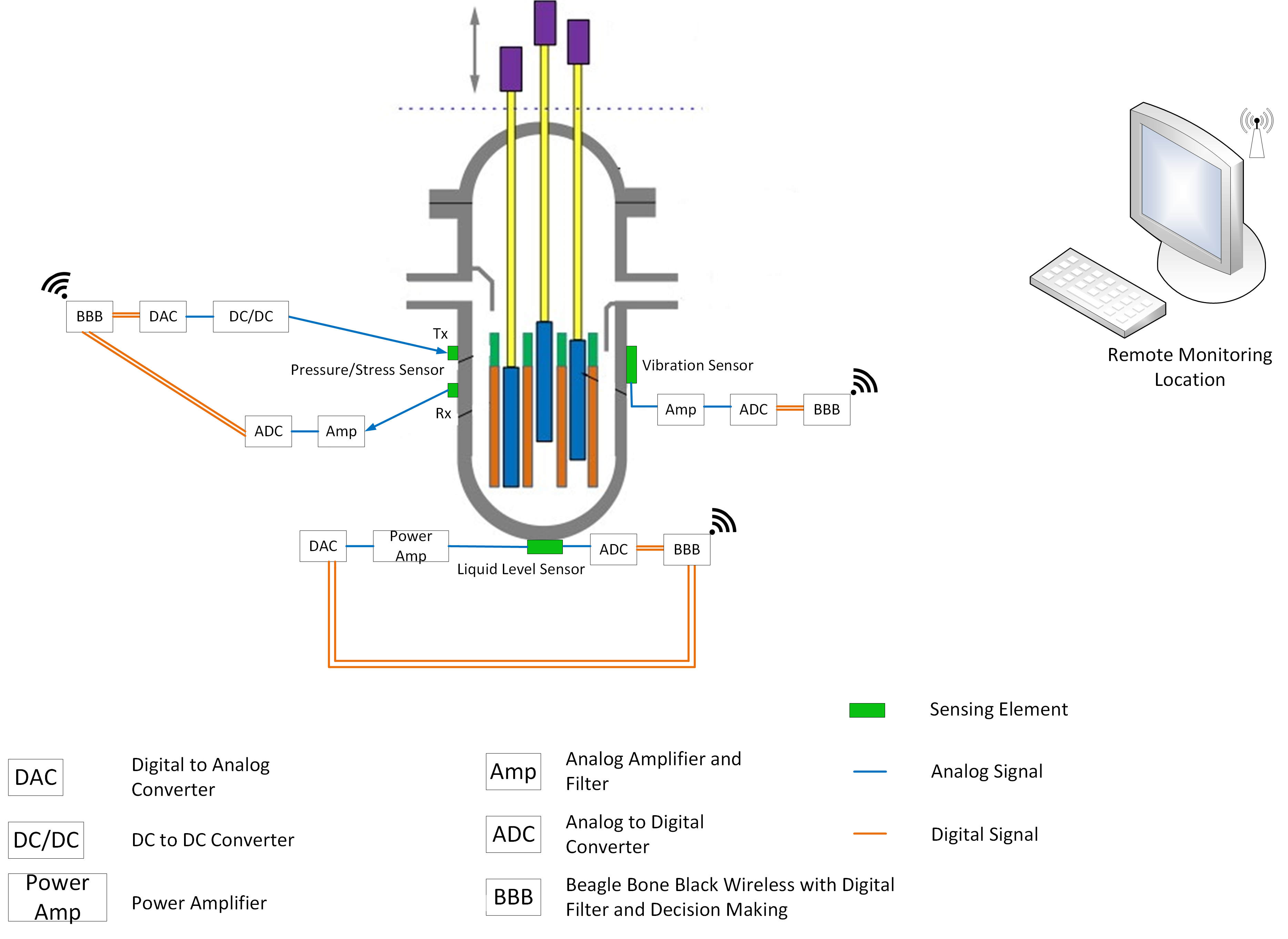
More than 10,000 sensors and detectors are usually adopted in a typical nuclear power plant (NPP) unit for measurements and controls of nuclear and non-nuclear processes, radiation monitoring, and other special applications including vibration measurements, hydrogen concentration monitoring, water conductivity and boric acid concentration measurement, or failed fuel detection, etc. (IAEA, 1999). Among a wide range of different sensing technologies, piezoelectric sensing has been increasingly used in temperature measurement, vibration monitoring, pressure and flow rate measurement, hydrogen concentration measurement, detection of water level and structural defects (Korsah, et al., 2009), largely due to the nature of compact assembly of piezoelectric devices and free from electromagnetic interference. However, harsh environments (high temperatures, high radiations, etc.) in nuclear reactors and fuel cycle systems greatly challenge the existing NPP sensing technology. Specifically, existing piezoelectric (including acoustic sensing) sensing techniques are mostly limited to applications at temperatures up to <250°C, by their lack of radiation resistance, their lack of embed-ability because of the wired electric power supply and communication, and their unknown long-term performance behavior under harsh environments.
In this project, we develop 1) high temperature (> 600°C) embedded/integrated sensors (HiTEIS) for wireless monitoring of temperature, vibration, water level, pressure and structural integrity; 2) investigate remote acoustic charging of HiTEISs using laser ultrasound; 3) implement nuclear environment compatible secured remote communication for HiTEISs; 4) verify the HiTEIS technology in reactor and fuel cycle environments.
Sponsor:
